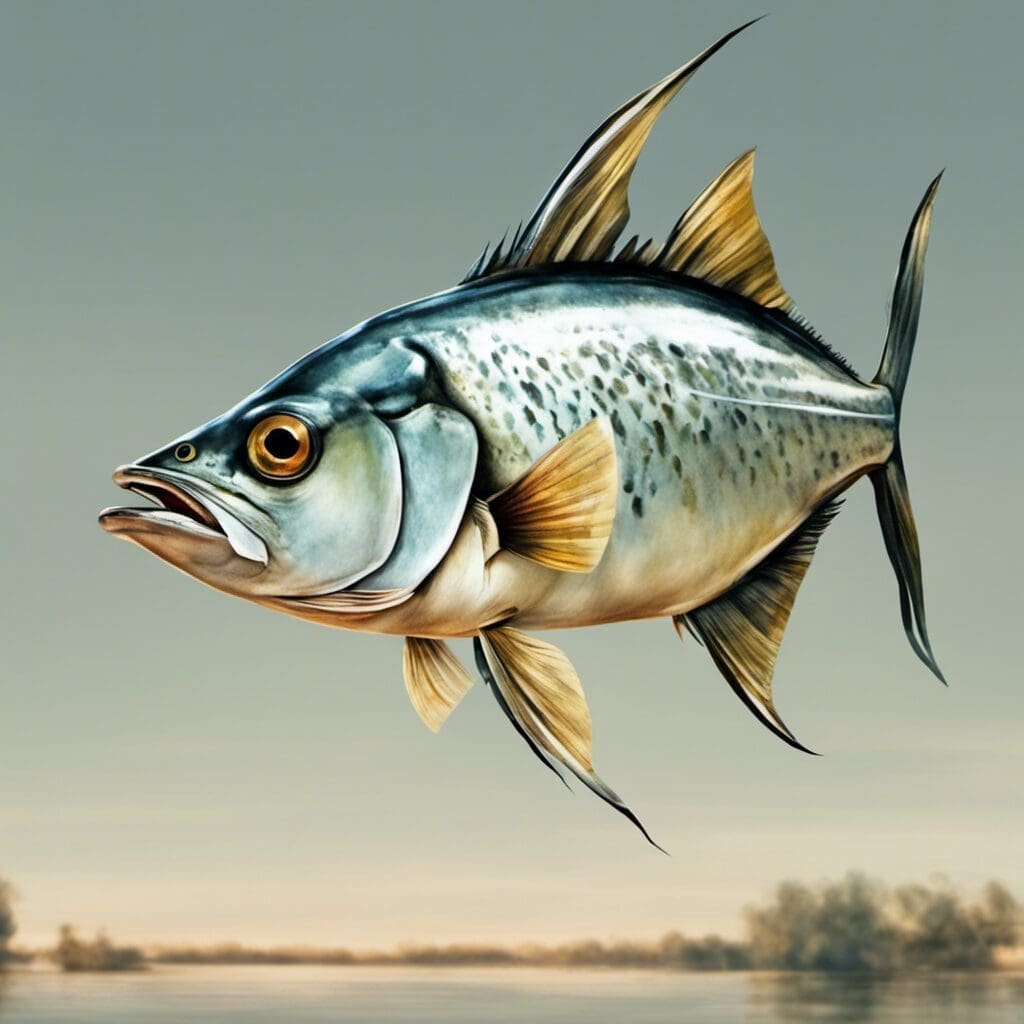Introduction: Horse-Eye Jack
Belonging to the Carangidae family, the Horse-Eye Jack is a game fish typically found in the tropical and subtropical regions around the world.
Conservation Status
The conservation status of the Horse-Eye Jack isn’t alarming. Currently, it is not enlisted in any threatened species list and is widely prevalent.
Conservation efforts: While specific conservation efforts directly aimed at the horse-eye jack have not been identified, policies oriented towards the protection of marine habitats and sustainable fishing practices indirectly benefit the species.
Statistics
| Average | Range | |
|---|---|---|
| Length | 24 inches | 18 – 30 inches |
| Weight | 14 pounds | 10 – 20 pounds |
| Average Lifespan | – | Up to 25 years |
| Food Habits | Opportunistic feeders | Fed on fish and invertebrates |
Distribution
A Horse-Eye Jack can commonly be found in the regions of Atlantic, Indian, and Pacific oceans. They are native to the subtropical and tropical waters around the world.
Migration patterns
Horse-Eye Jacks are known to migrate in large schools, moving around based on water temperature, availability of food, and breeding needs.
Habitats
The Horse-Eye Jack primarily resides in offshore reefs and open waters. They are associated more with offshore habitats.
– Water type: Mostly saltwater, sometimes brackish
– Depth range: Between 3.3 – 230 feet
– Temperature range: Prefer warm tropical and subtropical waters
When and Where to See
Seasonal patterns and Time of day: The Horse-Eye Jack is active throughout the day and can be seen year-round in suitable climates and conditions.
Best Fishing Locations
Top notch places where you may have high chances to get a big catch are:
- Florida, USA
- Gulf of Mexico
- Bahamas
- Caribbean Sea
- Brazil
- West Africa
- West Indies
- Costa Rica
- Gulf of California
- Western Australia
General Tips
Look out for bird activity; the presence of birds can often indicate the presence of a school of horse-eye jack.
How to Catch
Preferred bait or lures: The best way to seize these jacks is to use live, natural baits such as small fish and invertebrates.
Best fishing techniques: Surf fishing, fly fishing, trolling, and bottom fishing are all effective techniques.
Identification Guide
Predominately silver to blue-grey in color, the Horse-Eye Jack has a streamlined body with a deeply forked tail and a bony plate along the base of the body.
Culinary
Although not a common choice for eating due to its strong, distinctive taste, the Horse-Eye Jack can be prepared several ways.
Nutritional Information: Horse-eye jack provides a rich source of protein and is low in saturated fat.
Recipes: It is best enjoyed in a Citrus Marinated Horse-Eye Jack recipe.
Additional Information
The Horse-Eye Jack is a predatory fish, feeding predominantly on smaller fish, shrimp, and invertebrates.
Natural predators: Larger pelagic species prey on horse-eye jack, including sharks and larger bony fish.
References and Further Reading
Please refer to the following sources for more in-depth knowledge:
– Florida Museum. “Horse-eye Jack.” (https://www.floridamuseum.ufl.edu/discover-fish/species-profiles/carangoides-hippos/)
– Fishes of Australia. “Horse-Eye Jack.” (https://fishesofaustralia.net.au/home/species/3771)
These sources always offer the most accurate and up-to-date information.
Please remember that whenever you click on an external link, it will open in a new tab. Always use the search engine to verify any information that seems out of the ordinary

